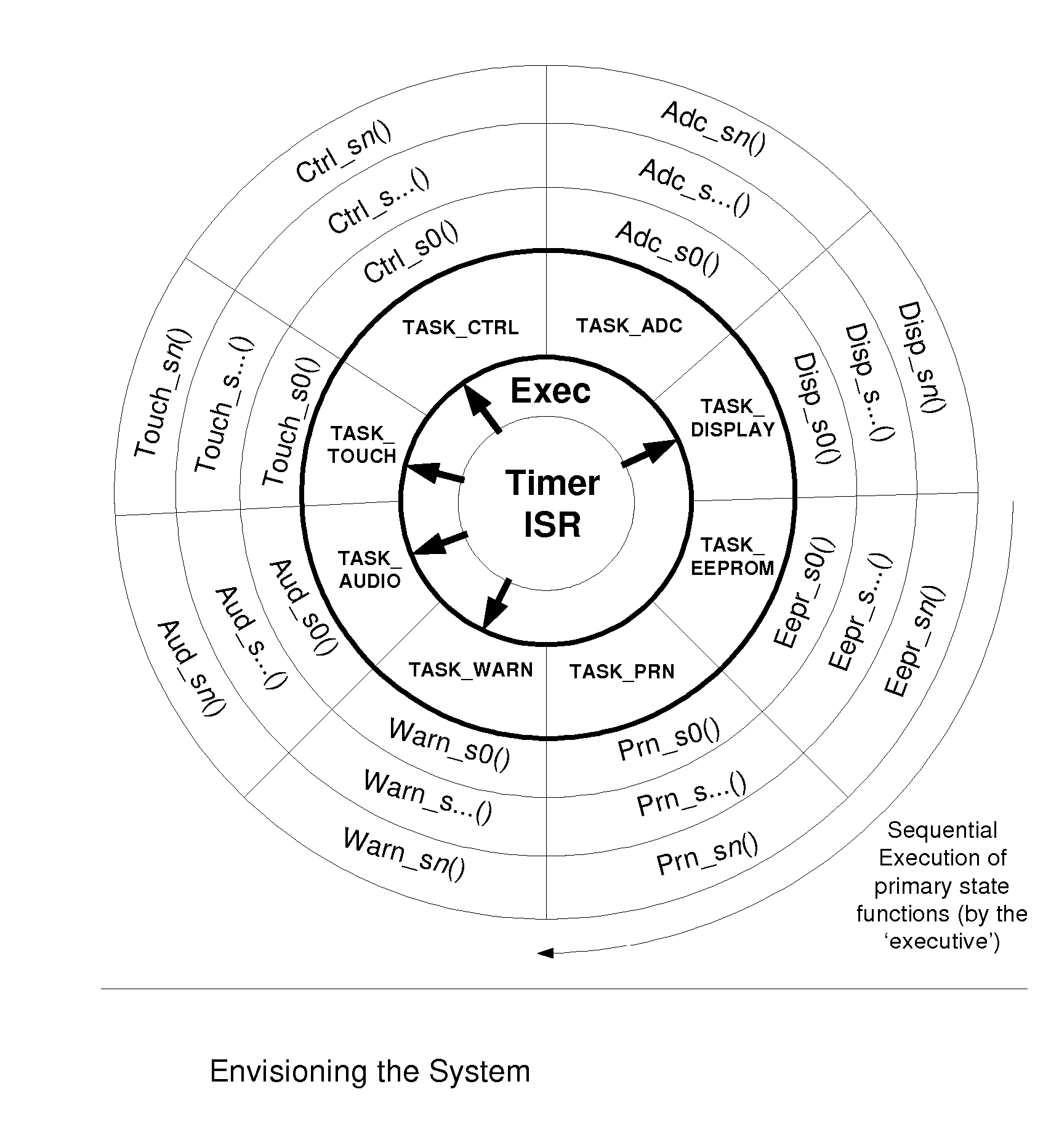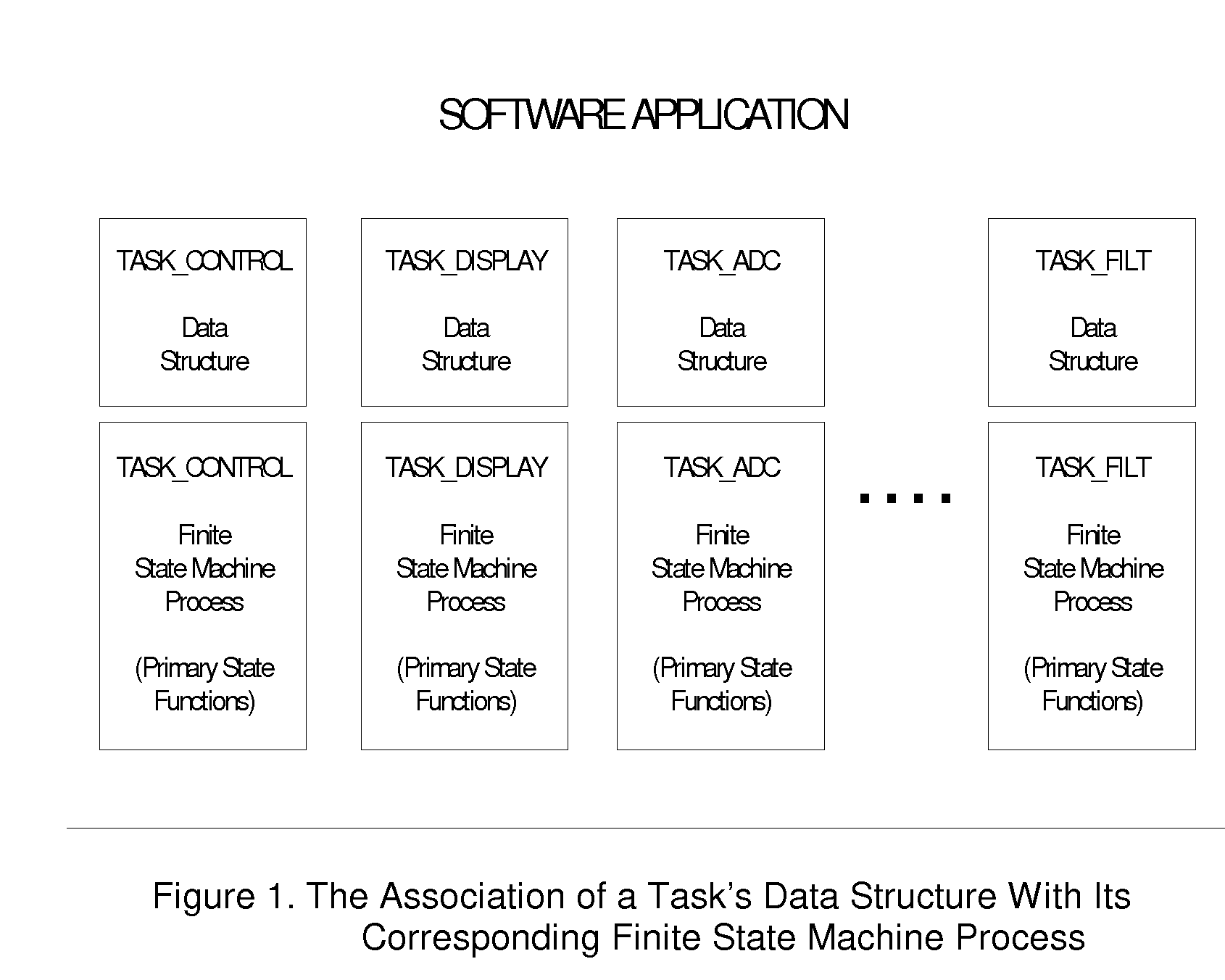Software Architecture and Program for the Concurrent Execution of Finite State Machine-Encoded Processes, on Single or Multiple-Processor-Based Embedded Systems
a software architecture and program technology, applied in multi-programming arrangements, program control, instruments, etc., can solve problems such as inefficient use of processors, complicated deterministic behavior of systems, and more difficult to verify embedded application's behavior in dynamic, eventful environments
- Summary
- Abstract
- Description
- Claims
- Application Information
AI Technical Summary
Benefits of technology
Problems solved by technology
Method used
Image
Examples
Embodiment Construction
—PREFERRED EMBODIMENT—FIGS. 1-9
[0037] The preferred embodiment of this invention contains the program and data structures comprising the overall architecture and consists of the Executive, the Task Data Structure, the System Timer services and the System Calls. Each of these objects is described in conjunction with the cited figures.
[0038]FIG. 1 shows the preferred way of partitioning an embedded software application using this architecture. The partitioning criterion shown in this example considers each of the hardware resources a task. The figure shows a display and an Analog-to-Digital Converter (ADC) as resources typically found in embedded systems. The figure also shows a Control Task and a Filter Task, which, although not hardware resources, are processes that qualify, using this partitioning criterion, as tasks whose behavior can be described as a Finite state Machines. This figure therefore attempts to convey the partitioning criterion that any required operation related to...
PUM
 Login to View More
Login to View More Abstract
Description
Claims
Application Information
 Login to View More
Login to View More - R&D
- Intellectual Property
- Life Sciences
- Materials
- Tech Scout
- Unparalleled Data Quality
- Higher Quality Content
- 60% Fewer Hallucinations
Browse by: Latest US Patents, China's latest patents, Technical Efficacy Thesaurus, Application Domain, Technology Topic, Popular Technical Reports.
© 2025 PatSnap. All rights reserved.Legal|Privacy policy|Modern Slavery Act Transparency Statement|Sitemap|About US| Contact US: help@patsnap.com



